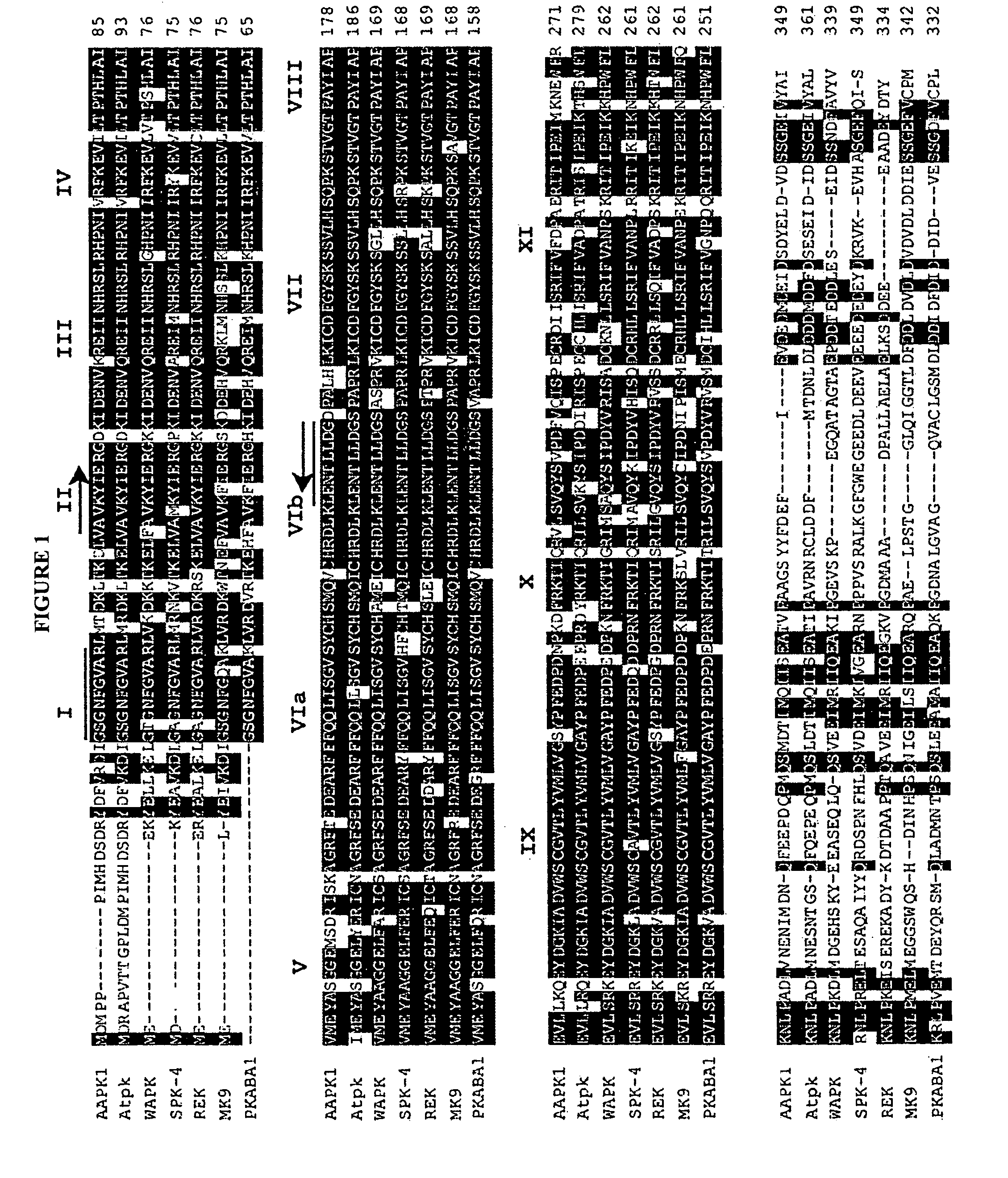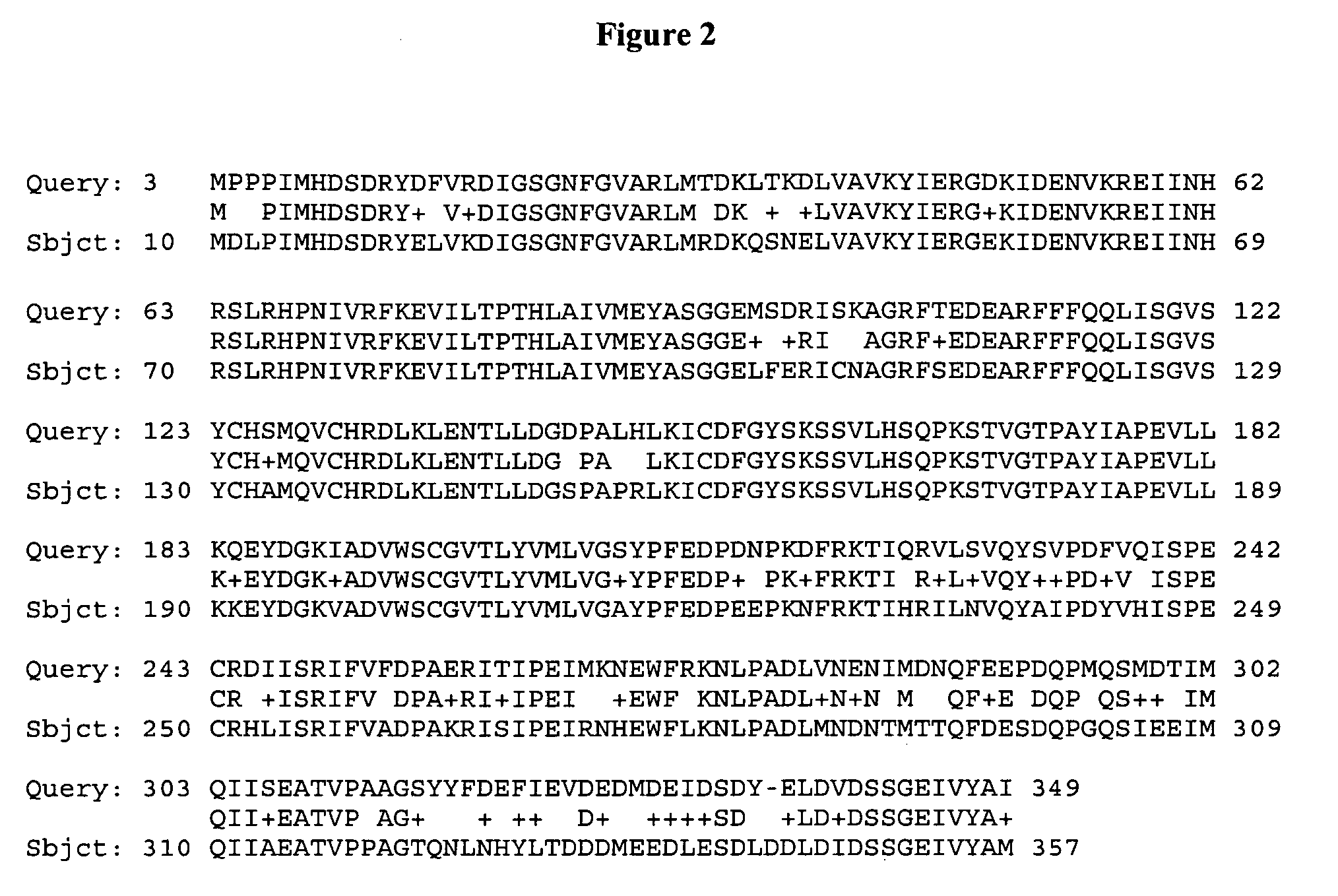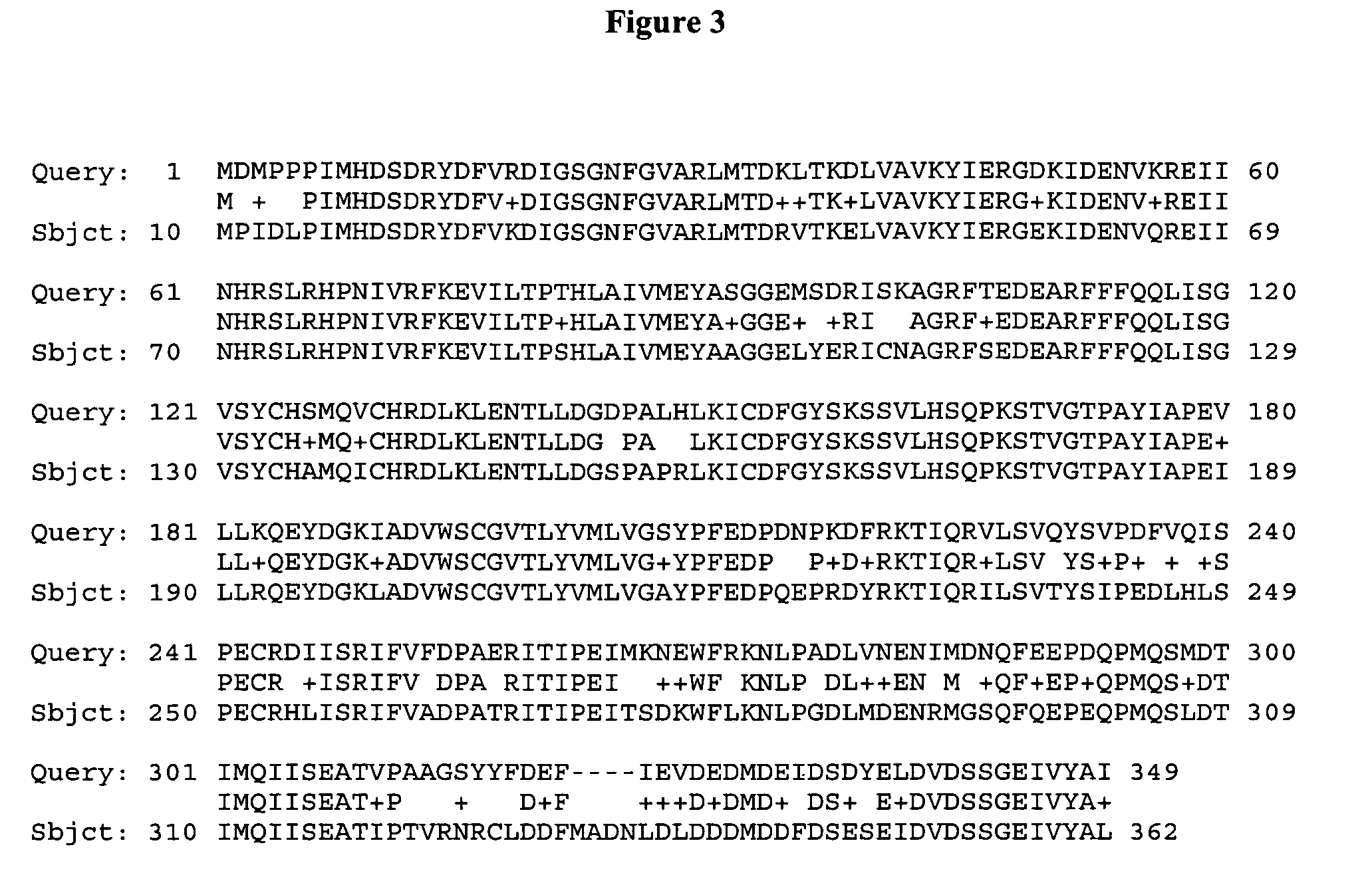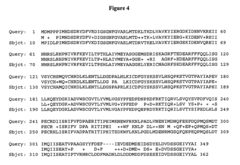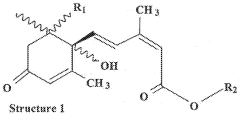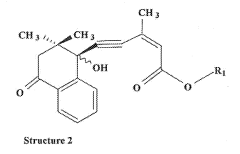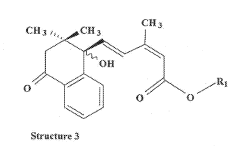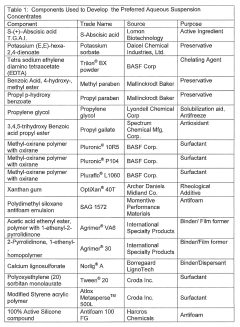Leveraging Abscisic Acid for Advanced Crop Management Techniques
JUL 14, 20259 MIN READ
Generate Your Research Report Instantly with AI Agent
Patsnap Eureka helps you evaluate technical feasibility & market potential.
ABA in Crop Management: Background and Objectives
Abscisic acid (ABA) has emerged as a crucial phytohormone in plant stress responses and developmental processes. Its potential in advanced crop management techniques has garnered significant attention in recent years. The evolution of ABA research spans several decades, beginning with its discovery in the 1960s as a plant growth inhibitor. Since then, our understanding of ABA's roles in plant physiology has expanded dramatically, revealing its importance in seed dormancy, germination, stomatal closure, and stress tolerance.
The primary objective of leveraging ABA for crop management is to enhance agricultural productivity and sustainability in the face of increasing environmental challenges. Climate change, water scarcity, and soil degradation pose significant threats to global food security. By harnessing the power of ABA, researchers and agronomists aim to develop crops with improved drought tolerance, water use efficiency, and overall stress resilience.
Recent technological advancements have accelerated progress in this field. High-throughput screening methods, genetic engineering techniques, and precision agriculture tools have enabled more sophisticated approaches to ABA manipulation in crops. These innovations allow for targeted interventions in ABA biosynthesis, signaling pathways, and downstream responses, opening up new possibilities for crop improvement.
The integration of ABA-based strategies into modern agriculture aligns with the broader trend towards sustainable and climate-smart farming practices. As global populations continue to grow and arable land becomes increasingly scarce, optimizing crop performance under suboptimal conditions becomes paramount. ABA-mediated improvements in plant stress tolerance and resource use efficiency offer a promising avenue for addressing these challenges.
Furthermore, the exploration of ABA's potential in crop management intersects with other emerging agricultural technologies. Precision farming, IoT sensors, and AI-driven decision support systems can be synergistically combined with ABA-based interventions to create holistic crop management solutions. This interdisciplinary approach holds the promise of revolutionizing agricultural practices, leading to more resilient and productive farming systems.
As research in this field progresses, the ultimate goal is to translate laboratory findings into practical, field-applicable techniques. This involves not only developing ABA-enhanced crop varieties but also creating management protocols that optimize ABA's effects under real-world conditions. The successful implementation of these strategies could significantly contribute to global food security and sustainable agriculture in the coming decades.
The primary objective of leveraging ABA for crop management is to enhance agricultural productivity and sustainability in the face of increasing environmental challenges. Climate change, water scarcity, and soil degradation pose significant threats to global food security. By harnessing the power of ABA, researchers and agronomists aim to develop crops with improved drought tolerance, water use efficiency, and overall stress resilience.
Recent technological advancements have accelerated progress in this field. High-throughput screening methods, genetic engineering techniques, and precision agriculture tools have enabled more sophisticated approaches to ABA manipulation in crops. These innovations allow for targeted interventions in ABA biosynthesis, signaling pathways, and downstream responses, opening up new possibilities for crop improvement.
The integration of ABA-based strategies into modern agriculture aligns with the broader trend towards sustainable and climate-smart farming practices. As global populations continue to grow and arable land becomes increasingly scarce, optimizing crop performance under suboptimal conditions becomes paramount. ABA-mediated improvements in plant stress tolerance and resource use efficiency offer a promising avenue for addressing these challenges.
Furthermore, the exploration of ABA's potential in crop management intersects with other emerging agricultural technologies. Precision farming, IoT sensors, and AI-driven decision support systems can be synergistically combined with ABA-based interventions to create holistic crop management solutions. This interdisciplinary approach holds the promise of revolutionizing agricultural practices, leading to more resilient and productive farming systems.
As research in this field progresses, the ultimate goal is to translate laboratory findings into practical, field-applicable techniques. This involves not only developing ABA-enhanced crop varieties but also creating management protocols that optimize ABA's effects under real-world conditions. The successful implementation of these strategies could significantly contribute to global food security and sustainable agriculture in the coming decades.
Market Analysis for ABA-based Agricultural Solutions
The market for ABA-based agricultural solutions is experiencing significant growth, driven by increasing global food demand and the need for sustainable crop management practices. As climate change continues to pose challenges to traditional farming methods, ABA-based technologies offer promising solutions for enhancing crop resilience and productivity.
The global market for plant growth regulators, including ABA-based products, is projected to reach substantial value in the coming years. This growth is primarily attributed to the rising adoption of precision agriculture techniques and the increasing awareness of the benefits of plant growth regulators in crop management.
Key market segments for ABA-based solutions include drought-resistant crops, fruit ripening control, and stress tolerance enhancement. The drought-resistant crop segment is particularly promising, as water scarcity becomes a critical issue in many agricultural regions worldwide. ABA's role in regulating plant responses to water stress makes it a valuable tool for developing crops that can thrive in water-limited conditions.
The fruit ripening control segment is also gaining traction, especially in the post-harvest management of climacteric fruits. ABA-based solutions can help regulate the ripening process, extending shelf life and reducing post-harvest losses. This application is particularly relevant in the context of global food security and the reduction of food waste.
Geographically, North America and Europe currently lead the market for ABA-based agricultural solutions, owing to their advanced agricultural practices and strong research and development capabilities. However, the Asia-Pacific region is expected to witness the fastest growth in the coming years, driven by the increasing adoption of modern agricultural technologies in countries like China and India.
The market is characterized by a mix of established agrochemical companies and innovative startups. Major players are investing heavily in research and development to expand their product portfolios and gain a competitive edge. Collaborations between academic institutions and industry partners are also becoming more common, accelerating the development and commercialization of novel ABA-based solutions.
Despite the promising outlook, the market faces certain challenges. Regulatory hurdles and the need for extensive field trials can slow down the commercialization process of new ABA-based products. Additionally, the high cost of research and development may limit market entry for smaller companies.
In conclusion, the market for ABA-based agricultural solutions shows strong growth potential, driven by the increasing need for sustainable and resilient crop management practices. As research in this field continues to advance, we can expect to see a wider range of innovative products and applications in the coming years, further expanding the market opportunities in this sector.
The global market for plant growth regulators, including ABA-based products, is projected to reach substantial value in the coming years. This growth is primarily attributed to the rising adoption of precision agriculture techniques and the increasing awareness of the benefits of plant growth regulators in crop management.
Key market segments for ABA-based solutions include drought-resistant crops, fruit ripening control, and stress tolerance enhancement. The drought-resistant crop segment is particularly promising, as water scarcity becomes a critical issue in many agricultural regions worldwide. ABA's role in regulating plant responses to water stress makes it a valuable tool for developing crops that can thrive in water-limited conditions.
The fruit ripening control segment is also gaining traction, especially in the post-harvest management of climacteric fruits. ABA-based solutions can help regulate the ripening process, extending shelf life and reducing post-harvest losses. This application is particularly relevant in the context of global food security and the reduction of food waste.
Geographically, North America and Europe currently lead the market for ABA-based agricultural solutions, owing to their advanced agricultural practices and strong research and development capabilities. However, the Asia-Pacific region is expected to witness the fastest growth in the coming years, driven by the increasing adoption of modern agricultural technologies in countries like China and India.
The market is characterized by a mix of established agrochemical companies and innovative startups. Major players are investing heavily in research and development to expand their product portfolios and gain a competitive edge. Collaborations between academic institutions and industry partners are also becoming more common, accelerating the development and commercialization of novel ABA-based solutions.
Despite the promising outlook, the market faces certain challenges. Regulatory hurdles and the need for extensive field trials can slow down the commercialization process of new ABA-based products. Additionally, the high cost of research and development may limit market entry for smaller companies.
In conclusion, the market for ABA-based agricultural solutions shows strong growth potential, driven by the increasing need for sustainable and resilient crop management practices. As research in this field continues to advance, we can expect to see a wider range of innovative products and applications in the coming years, further expanding the market opportunities in this sector.
Current ABA Applications and Challenges in Agriculture
Abscisic acid (ABA) has emerged as a powerful tool in modern agriculture, with applications spanning various aspects of crop management. Currently, ABA is primarily utilized for enhancing crop stress tolerance, improving water use efficiency, and regulating plant growth and development. In stress management, exogenous ABA applications have shown promising results in mitigating the effects of drought, salinity, and extreme temperatures on crops. Farmers and agronomists are increasingly adopting ABA-based treatments to prepare crops for anticipated stress conditions, thereby reducing yield losses.
Water use efficiency is another critical area where ABA plays a significant role. By inducing stomatal closure, ABA helps plants conserve water during periods of drought or in water-limited environments. This application is particularly valuable in arid and semi-arid regions, where water scarcity is a persistent challenge. Some advanced irrigation systems now incorporate ABA-based sensors to optimize water delivery based on plant stress levels, leading to more sustainable water management practices in agriculture.
In terms of growth regulation, ABA is being explored for its potential to control fruit ripening, seed dormancy, and plant architecture. These applications offer new avenues for improving crop quality and yield. For instance, in viticulture, ABA treatments are being tested to enhance grape color development and synchronize ripening, which could significantly impact wine production.
Despite these advancements, the agricultural sector faces several challenges in fully leveraging ABA's potential. One major hurdle is the development of cost-effective and stable ABA formulations suitable for large-scale field applications. The current high production costs of synthetic ABA limit its widespread adoption, particularly among small-scale farmers. Additionally, the timing and dosage of ABA applications remain critical factors that require precise management to achieve optimal results without adverse effects on crop yield.
Another significant challenge lies in understanding the complex interactions between ABA and other plant hormones in different crop species and environmental conditions. This complexity often leads to inconsistent results in field trials, hampering the development of standardized ABA-based crop management protocols. Furthermore, the potential long-term effects of repeated ABA applications on soil microbiota and ecosystem health are not yet fully understood, raising concerns about sustainable use.
Regulatory hurdles also present a challenge to the widespread adoption of ABA in agriculture. The classification and approval processes for ABA-based products vary across different countries, creating a complex landscape for manufacturers and distributors. This regulatory diversity can slow down the introduction of innovative ABA applications in certain markets.
Water use efficiency is another critical area where ABA plays a significant role. By inducing stomatal closure, ABA helps plants conserve water during periods of drought or in water-limited environments. This application is particularly valuable in arid and semi-arid regions, where water scarcity is a persistent challenge. Some advanced irrigation systems now incorporate ABA-based sensors to optimize water delivery based on plant stress levels, leading to more sustainable water management practices in agriculture.
In terms of growth regulation, ABA is being explored for its potential to control fruit ripening, seed dormancy, and plant architecture. These applications offer new avenues for improving crop quality and yield. For instance, in viticulture, ABA treatments are being tested to enhance grape color development and synchronize ripening, which could significantly impact wine production.
Despite these advancements, the agricultural sector faces several challenges in fully leveraging ABA's potential. One major hurdle is the development of cost-effective and stable ABA formulations suitable for large-scale field applications. The current high production costs of synthetic ABA limit its widespread adoption, particularly among small-scale farmers. Additionally, the timing and dosage of ABA applications remain critical factors that require precise management to achieve optimal results without adverse effects on crop yield.
Another significant challenge lies in understanding the complex interactions between ABA and other plant hormones in different crop species and environmental conditions. This complexity often leads to inconsistent results in field trials, hampering the development of standardized ABA-based crop management protocols. Furthermore, the potential long-term effects of repeated ABA applications on soil microbiota and ecosystem health are not yet fully understood, raising concerns about sustainable use.
Regulatory hurdles also present a challenge to the widespread adoption of ABA in agriculture. The classification and approval processes for ABA-based products vary across different countries, creating a complex landscape for manufacturers and distributors. This regulatory diversity can slow down the introduction of innovative ABA applications in certain markets.
Existing ABA-based Crop Management Techniques
01 Synthesis and production of abscisic acid
Various methods for synthesizing and producing abscisic acid, including chemical synthesis, biotechnological approaches, and extraction from natural sources. These techniques aim to improve the efficiency and yield of abscisic acid production for agricultural and research applications.- Synthesis and production of abscisic acid: Various methods for synthesizing and producing abscisic acid, including chemical synthesis, biotechnological approaches, and extraction from plant sources. These techniques aim to improve the yield and purity of abscisic acid for agricultural and research applications.
- Agricultural applications of abscisic acid: Use of abscisic acid in agriculture for various purposes such as plant growth regulation, stress tolerance enhancement, and crop yield improvement. Applications include seed treatment, foliar sprays, and soil amendments to modulate plant responses to environmental conditions.
- Abscisic acid analogs and derivatives: Development and use of synthetic analogs and derivatives of abscisic acid with enhanced stability, bioactivity, or specificity. These compounds are designed to improve the efficacy and applicability of abscisic acid in various fields, including agriculture and biotechnology.
- Abscisic acid in plant stress response: Investigation of the role of abscisic acid in plant stress responses, including drought, salinity, and temperature stress. Research focuses on understanding the signaling pathways and molecular mechanisms involved in abscisic acid-mediated stress tolerance.
- Formulations and delivery systems for abscisic acid: Development of various formulations and delivery systems for abscisic acid to improve its stability, bioavailability, and efficacy in different applications. These include encapsulation techniques, controlled release systems, and combination with other active ingredients.
02 Agricultural applications of abscisic acid
Use of abscisic acid in agriculture for various purposes, such as regulating plant growth, improving stress tolerance, and enhancing crop yield. Applications include seed treatment, foliar sprays, and soil amendments to optimize plant performance under different environmental conditions.Expand Specific Solutions03 Abscisic acid analogs and derivatives
Development and use of abscisic acid analogs and derivatives with enhanced stability, bioactivity, or specificity. These modified compounds aim to improve the effectiveness of abscisic acid in various applications, including agriculture and plant research.Expand Specific Solutions04 Formulations and compositions containing abscisic acid
Development of various formulations and compositions incorporating abscisic acid for improved stability, delivery, and efficacy. These formulations may include encapsulation techniques, controlled-release systems, or combinations with other active ingredients to enhance the overall performance of abscisic acid-based products.Expand Specific Solutions05 Detection and quantification methods for abscisic acid
Development of analytical techniques and methods for detecting and quantifying abscisic acid in plant tissues, seeds, or other biological samples. These methods may include chromatography, spectroscopy, or immunoassays to accurately measure abscisic acid levels for research or quality control purposes.Expand Specific Solutions
Key Players in ABA-based Crop Management
The competitive landscape for leveraging Abscisic Acid (ABA) in advanced crop management is evolving rapidly. The industry is in a growth phase, with increasing market size driven by the need for sustainable agriculture solutions. The global ABA market is expected to expand significantly in the coming years. Technologically, ABA applications are advancing, with companies like Valent BioSciences Corp., Syngenta, and BASF leading research efforts. Academic institutions such as China Agricultural University and the University of California are also contributing to ABA-related innovations. The technology's maturity varies across applications, with some commercial products available but significant potential for further development in areas like drought resistance and yield improvement.
Valent BioSciences Corp.
Technical Solution: Valent BioSciences has developed a unique approach to leveraging ABA for crop management through their ProAct® technology. This proprietary formulation contains s-ABA and is designed for foliar application to enhance plant stress tolerance and improve fruit quality. Valent's research has shown that ProAct® can increase marketable yield in various fruit crops by 5-15% under heat stress conditions[7]. The company has also explored the use of ABA in combination with other plant growth regulators to create synergistic effects on crop performance. Recent studies have demonstrated that their ABA-based products can improve water use efficiency in leafy vegetables by up to 20% while maintaining or improving quality parameters[8].
Strengths: Specialization in biorational products, strong focus on fruit and vegetable crops, established regulatory expertise. Weaknesses: More limited scope compared to larger agrochemical companies, potential challenges in scaling production of bio-based products.
The Regents of the University of California
Technical Solution: The University of California system has been at the forefront of basic research on ABA signaling and its applications in crop management. Their approach focuses on elucidating the molecular mechanisms of ABA perception and signal transduction, which has led to the identification of novel targets for crop improvement. UC researchers have developed transgenic plants with enhanced ABA sensitivity that show improved drought tolerance without significant yield penalties[9]. They have also pioneered the use of chemical genomics to identify small molecules that can modulate ABA signaling, potentially leading to new classes of agrochemicals. Recent work from UC labs has demonstrated the potential of ABA-based approaches to improve nitrogen use efficiency in crops, with preliminary results showing a 10-15% reduction in fertilizer requirements while maintaining yields[10].
Strengths: Cutting-edge basic research capabilities, interdisciplinary approach combining molecular biology, chemistry, and agronomy. Weaknesses: Longer path to commercialization, reliance on partnerships for product development and deployment.
Innovative ABA Signaling Pathway Manipulations
Compositions and methods for regulating abscisic acid-induced closure of plant stomata
PatentInactiveUS7211436B1
Innovation
- Development of transgenic plants with modified ABA-mediated stomatal closure through the use of a novel nucleic acid molecule encoding an ABA-activated protein kinase (AAPK), allowing for specific control of stomatal aperture independent of CO2 and light responses, enabling growers to regulate transpiration based on environmental conditions.
Novel plant growth regulator compostions, methods of preparation and use therof
PatentWO2013033316A1
Innovation
- Development of an aqueous suspension concentrate formulation with S-(+)-Abscisic acid micro particles, stabilized with non-ionic polymeric surfactants and other additives, which enhances solubility, stability, and environmental safety, allowing for higher active ingredient concentrations and versatile application methods.
Environmental Impact of ABA-based Crop Management
The implementation of Abscisic Acid (ABA) in advanced crop management techniques has significant environmental implications that warrant careful consideration. ABA-based crop management strategies have the potential to enhance agricultural sustainability and reduce environmental impacts associated with traditional farming practices.
One of the primary environmental benefits of ABA-based crop management is the potential reduction in water usage. ABA plays a crucial role in regulating plant responses to water stress, and its application can improve crop water use efficiency. By optimizing irrigation schedules and enhancing drought tolerance, ABA-based techniques can lead to substantial water savings in agriculture, particularly in water-scarce regions. This conservation of water resources has far-reaching positive effects on local ecosystems and helps mitigate the environmental strain caused by excessive water extraction for agricultural purposes.
Furthermore, ABA-based crop management can contribute to reduced pesticide and fertilizer use. By enhancing plant stress tolerance and defense mechanisms, ABA applications may decrease the need for chemical interventions to protect crops from pests and diseases. This reduction in agrochemical use can lead to improved soil and water quality, benefiting both terrestrial and aquatic ecosystems. Additionally, the decreased reliance on synthetic inputs aligns with sustainable agriculture practices and supports the preservation of biodiversity in agricultural landscapes.
The environmental impact of ABA-based crop management extends to soil conservation as well. Improved root development and enhanced nutrient uptake efficiency, facilitated by ABA applications, can lead to better soil structure and reduced soil erosion. This contributes to long-term soil health and fertility, which is crucial for sustainable agricultural production and ecosystem stability.
However, it is essential to consider potential environmental risks associated with widespread ABA use in agriculture. The long-term effects of exogenous ABA applications on soil microbiota and non-target organisms are not yet fully understood. There is a need for comprehensive studies to assess the ecological impact of ABA residues in the environment and their potential effects on biodiversity.
Climate change mitigation is another area where ABA-based crop management could have a positive environmental impact. By improving crop resilience to abiotic stresses such as drought and heat, these techniques can help maintain agricultural productivity in the face of changing climate conditions. This adaptability could reduce the pressure to expand agricultural lands into natural habitats, thereby preserving carbon sinks and biodiversity.
In conclusion, while ABA-based crop management techniques show promise for reducing the environmental footprint of agriculture, a balanced approach is necessary. Continued research and monitoring are crucial to fully understand and mitigate any potential negative impacts while maximizing the environmental benefits of this innovative crop management strategy.
One of the primary environmental benefits of ABA-based crop management is the potential reduction in water usage. ABA plays a crucial role in regulating plant responses to water stress, and its application can improve crop water use efficiency. By optimizing irrigation schedules and enhancing drought tolerance, ABA-based techniques can lead to substantial water savings in agriculture, particularly in water-scarce regions. This conservation of water resources has far-reaching positive effects on local ecosystems and helps mitigate the environmental strain caused by excessive water extraction for agricultural purposes.
Furthermore, ABA-based crop management can contribute to reduced pesticide and fertilizer use. By enhancing plant stress tolerance and defense mechanisms, ABA applications may decrease the need for chemical interventions to protect crops from pests and diseases. This reduction in agrochemical use can lead to improved soil and water quality, benefiting both terrestrial and aquatic ecosystems. Additionally, the decreased reliance on synthetic inputs aligns with sustainable agriculture practices and supports the preservation of biodiversity in agricultural landscapes.
The environmental impact of ABA-based crop management extends to soil conservation as well. Improved root development and enhanced nutrient uptake efficiency, facilitated by ABA applications, can lead to better soil structure and reduced soil erosion. This contributes to long-term soil health and fertility, which is crucial for sustainable agricultural production and ecosystem stability.
However, it is essential to consider potential environmental risks associated with widespread ABA use in agriculture. The long-term effects of exogenous ABA applications on soil microbiota and non-target organisms are not yet fully understood. There is a need for comprehensive studies to assess the ecological impact of ABA residues in the environment and their potential effects on biodiversity.
Climate change mitigation is another area where ABA-based crop management could have a positive environmental impact. By improving crop resilience to abiotic stresses such as drought and heat, these techniques can help maintain agricultural productivity in the face of changing climate conditions. This adaptability could reduce the pressure to expand agricultural lands into natural habitats, thereby preserving carbon sinks and biodiversity.
In conclusion, while ABA-based crop management techniques show promise for reducing the environmental footprint of agriculture, a balanced approach is necessary. Continued research and monitoring are crucial to fully understand and mitigate any potential negative impacts while maximizing the environmental benefits of this innovative crop management strategy.
Regulatory Framework for ABA Use in Agriculture
The regulatory framework for the use of abscisic acid (ABA) in agriculture is a complex and evolving landscape that varies across different regions and countries. In the United States, the Environmental Protection Agency (EPA) plays a crucial role in regulating plant growth regulators, including ABA, under the Federal Insecticide, Fungicide, and Rodenticide Act (FIFRA). The EPA requires extensive safety and efficacy data before approving ABA-based products for agricultural use.
In the European Union, the European Food Safety Authority (EFSA) and the European Commission are responsible for evaluating and authorizing plant protection products. The regulatory process for ABA in the EU involves rigorous risk assessments and adherence to strict guidelines outlined in Regulation (EC) No 1107/2009. This regulation emphasizes the protection of human and animal health, as well as the environment.
Japan's regulatory framework for ABA falls under the jurisdiction of the Ministry of Agriculture, Forestry and Fisheries (MAFF). The Agricultural Chemicals Regulation Law governs the registration and use of plant growth regulators, including ABA. Japanese regulations focus on ensuring product safety and efficacy while minimizing environmental impact.
Many developing countries are still in the process of establishing comprehensive regulatory frameworks for ABA and other plant growth regulators. The Food and Agriculture Organization (FAO) of the United Nations provides guidelines and support to these nations in developing their regulatory systems, emphasizing the importance of harmonizing regulations to facilitate international trade while ensuring safety.
Globally, there is a growing trend towards harmonizing regulatory approaches for plant growth regulators. The Organization for Economic Co-operation and Development (OECD) has been instrumental in developing guidelines for the testing and assessment of agricultural chemicals, including ABA. These efforts aim to streamline the regulatory process and reduce barriers to international trade while maintaining high safety standards.
As research on ABA's potential in crop management advances, regulatory bodies are continuously updating their frameworks to accommodate new scientific findings and applications. This dynamic regulatory environment presents both challenges and opportunities for stakeholders in the agricultural sector. Companies developing ABA-based products must navigate these complex regulatory landscapes, often requiring significant investments in research and development to meet evolving regulatory requirements.
The future of ABA regulation in agriculture is likely to focus on sustainable use, with increased emphasis on integrated pest management strategies and reduced environmental impact. As climate change continues to affect global agriculture, regulatory frameworks may need to adapt to support the use of ABA in enhancing crop resilience while ensuring food safety and environmental protection.
In the European Union, the European Food Safety Authority (EFSA) and the European Commission are responsible for evaluating and authorizing plant protection products. The regulatory process for ABA in the EU involves rigorous risk assessments and adherence to strict guidelines outlined in Regulation (EC) No 1107/2009. This regulation emphasizes the protection of human and animal health, as well as the environment.
Japan's regulatory framework for ABA falls under the jurisdiction of the Ministry of Agriculture, Forestry and Fisheries (MAFF). The Agricultural Chemicals Regulation Law governs the registration and use of plant growth regulators, including ABA. Japanese regulations focus on ensuring product safety and efficacy while minimizing environmental impact.
Many developing countries are still in the process of establishing comprehensive regulatory frameworks for ABA and other plant growth regulators. The Food and Agriculture Organization (FAO) of the United Nations provides guidelines and support to these nations in developing their regulatory systems, emphasizing the importance of harmonizing regulations to facilitate international trade while ensuring safety.
Globally, there is a growing trend towards harmonizing regulatory approaches for plant growth regulators. The Organization for Economic Co-operation and Development (OECD) has been instrumental in developing guidelines for the testing and assessment of agricultural chemicals, including ABA. These efforts aim to streamline the regulatory process and reduce barriers to international trade while maintaining high safety standards.
As research on ABA's potential in crop management advances, regulatory bodies are continuously updating their frameworks to accommodate new scientific findings and applications. This dynamic regulatory environment presents both challenges and opportunities for stakeholders in the agricultural sector. Companies developing ABA-based products must navigate these complex regulatory landscapes, often requiring significant investments in research and development to meet evolving regulatory requirements.
The future of ABA regulation in agriculture is likely to focus on sustainable use, with increased emphasis on integrated pest management strategies and reduced environmental impact. As climate change continues to affect global agriculture, regulatory frameworks may need to adapt to support the use of ABA in enhancing crop resilience while ensuring food safety and environmental protection.
Unlock deeper insights with Patsnap Eureka Quick Research — get a full tech report to explore trends and direct your research. Try now!
Generate Your Research Report Instantly with AI Agent
Supercharge your innovation with Patsnap Eureka AI Agent Platform!
